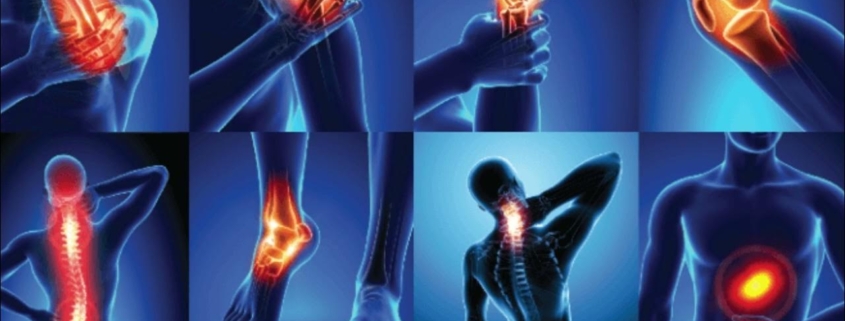Understanding Rheumatology: A Guide for Patients
Rheumatology is a medical specialty that focuses on the diagnosis and management of disorders affecting the joints, muscles, bones and connective tissues. These disorders, collectively termed rheumatic diseases, encompass a diverse spectrum of conditions, each with unique manifestations and varying degrees of severity. Early recognition and appropriate management are crucial for optimal patient outcomes, minimizing disease progression and improving quality of life.
Common Rheumatic Diseases
Rheumatoid arthritis (RA) is a chronic autoimmune condition characterized by systemic inflammation, primarily targeting the synovium, the lining of the joints. Osteoarthritis (OA), a degenerative joint disease, results from the gradual wear and tear of cartilage, leading to pain, stiffness and loss of joint function. Systemic lupus erythematosus (SLE) commonly known as lupus, is an autoimmune disorder that can affect various organs, including the joints, skin, kidneys and heart. Scleroderma, a rare connective tissue disease, causes the thickening and hardening of the skin and can involve internal organs. Gout, a form of inflammatory arthritis, is triggered by the accumulation of uric acid crystals in the joints, often manifesting as excruciating pain, typically in the big toe. Ankylosing spondylitis primarily affects the spine, causing inflammation and fusion of the vertebrae. Psoriatic arthritis, a condition associated with psoriasis, can lead to joint inflammation and skin lesions.
Symptoms of Rheumatic Diseases
The presentation of rheumatic diseases is multifaceted and can vary significantly among individuals. Common symptoms include joint pain and stiffness, particularly upon waking or after periods of inactivity. Fatigue, often described as an overwhelming sense of tiredness, is a frequent complaint among patients with rheumatic conditions. Fever, a systemic inflammatory response, may be present in certain diseases. Skin rashes, such as the characteristic butterfly rash in lupus, can be a prominent feature of some rheumatic disorders. Weight loss, unexplained fever and swollen lymph nodes may also occur in certain cases. In severe cases, individuals may experience shortness of breath due to complications affecting the lungs or heart.
Diagnosis of Rheumatic Diseases
Establishing a definitive diagnosis often requires a multi-pronged approach. A comprehensive medical history, including a detailed account of symptoms, family history and past medical conditions, is essential. A thorough physical examination with a particular focus on joint assessment is crucial. Laboratory investigations play a pivotal role. Blood tests may reveal elevated levels of inflammatory markers such as erythrocyte sedimentation rate (ESR) and C-reactive protein (CRP) and may identify specific autoantibodies associated with certain rheumatic diseases. Urine tests may be conducted to assess kidney function, particularly in conditions like lupus. Imaging studies such as X-rays, magnetic resonance imaging (MRI) and ultrasound can provide valuable insights into joint damage and inflammation. In some cases, analysis of joint fluid may be necessary to rule out infectious arthritis.
Treatment Approaches
The treatment of rheumatic diseases is tailored to the specific condition, its severity and the individual patient’s needs. Medications form a cornerstone of treatment. Disease-modifying anti-rheumatic drugs (DMARDs) are a class of medications that can slow the progression of certain autoimmune diseases. Biologics, a newer class of medications, target specific components of the immune system. Pain relievers such as non-steroidal anti-inflammatory drugs (NSAIDs) and acetaminophen can help manage pain and inflammation. Lifestyle modifications are crucial for managing rheumatic diseases. Regular exercise, such as low-impact activities like swimming and cycling can improve joint function and overall fitness. Maintaining a healthy weight can reduce stress on weight-bearing joints. Dietary adjustments such as incorporating anti-inflammatory foods and limiting processed foods may also be beneficial. Physical and occupational therapy can help improve joint mobility, strength and daily living skills. In some cases, surgical interventions such as joint replacement surgery, may be necessary to alleviate pain and restore function.
Living with Rheumatic Diseases
Living with a rheumatic disease can present significant challenges, both physical and emotional. Coping with chronic pain and fatigue can be demanding, requiring effective pain management strategies and energy conservation techniques. Stress and anxiety are common among individuals with rheumatic diseases and can exacerbate symptoms.
Stress and anxiety are common among individuals with rheumatic diseases and can exacerbate symptoms. Relaxation techniques such as mindfulness, deep breathing exercises and yoga can be beneficial in managing stress and promoting mental well-being. Support groups provide a valuable platform for individuals to connect with others who understand their experiences, share coping strategies and offer emotional support. Counseling can also be helpful in addressing emotional and psychological challenges associated with living with a chronic illness.
Role of the Rheumatologist
The rheumatologist plays a pivotal role in the care of individuals with rheumatic diseases. They are responsible for accurate diagnosis, developing and implementing comprehensive treatment plans and providing ongoing monitoring and adjustments to treatment regimens. Rheumatologists educate patients about their condition, answer their questions and provide guidance on self-management strategies. They also collaborate with other healthcare professionals, such as physical therapists, occupational therapists and nutritionists to ensure comprehensive and coordinated care.
Importance of Early Intervention
Early intervention is crucial for optimizing the management of rheumatic diseases. Prompt diagnosis and initiation of appropriate treatment can help to:
- Prevent joint damage and disability: Early intervention can slow the progression of disease and minimize the risk of irreversible joint damage and disability.
- Improve quality of life: Effective management of symptoms, such as pain and fatigue, can significantly improve an individual’s quality of life, allowing them to maintain their independence and participate fully in social and recreational activities.
- Reduce complications: Early intervention can help to prevent or minimize the risk of serious complications such as cardiovascular disease, kidney disease and lung disease which can occur in some rheumatic conditions.
Conclusion
Rheumatic diseases present a significant challenge to individuals’ health and well-being. However, significant advancements have been made in the diagnosis and management of these conditions. Early diagnosis, prompt initiation of appropriate treatment and a multidisciplinary approach to care are essential for optimizing patient outcomes. By working closely with their rheumatologist and adopting healthy lifestyle habits individuals with rheumatic diseases can effectively manage their condition and maintain a good quality of life.


